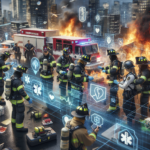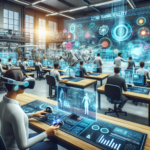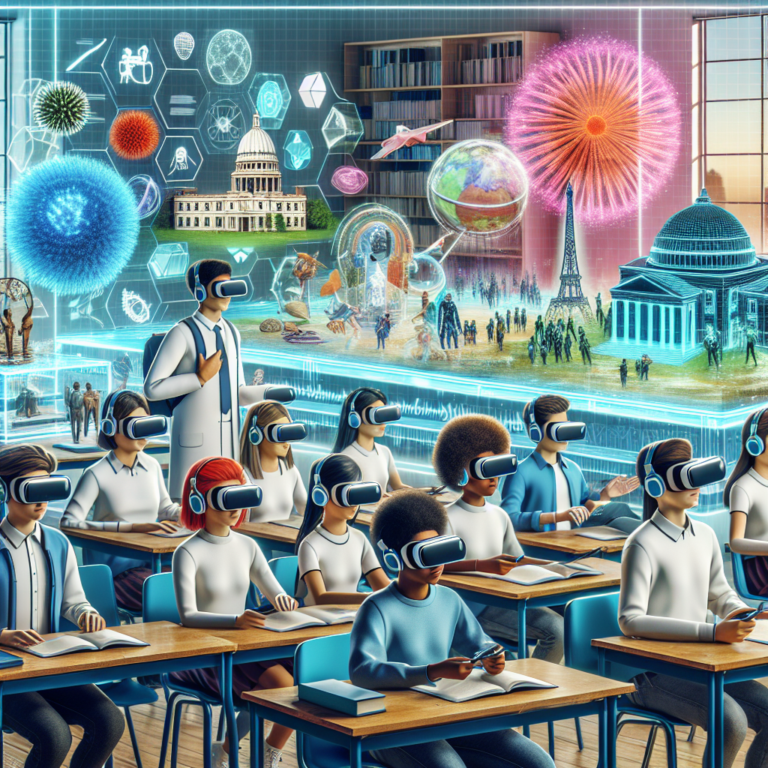Transforming Education: The Impact of XR Technologies on Remote Learning 🚀
XR in Education: The Evolution of Remote Learning
In recent years, the demand for remote learning has skyrocketed. The shift away from traditional classrooms, prompted by global events, has forced educators and students alike to adapt to online environments. As technology advances, the integration of extended reality (XR) has emerged as a game changer, providing immersive educational experiences that were previously unimaginable. XR encompasses Virtual Reality (VR), Augmented Reality (AR), and Mixed Reality (MR), creating an interactive bridge between the physical and digital worlds.
What is XR and Why Does It Matter?
XR in Education : Extended Reality (XR) is an umbrella term that includes all immersive technologies that enhance or replace the user’s real-world environment. Here’s a quick breakdown:
- Virtual Reality (VR): Creates a completely artificial environment for users to explore.
- Augmented Reality (AR): Overlay digital information onto the real world, enhancing the user’s perception of their surroundings.
- Mixed Reality (MR): Combines elements of both VR and AR, allowing real and virtual objects to coexist and interact.
This rapid evolution of XR technologies has crucial implications for remote learning, as they facilitate deeper engagement, enhance accessibility, and promote interactive learning experiences.
XR in Education : The Benefits of XR in Virtual Classrooms
1. Enhanced Engagement and Participation 🎮
One of the primary challenges of remote learning has been maintaining student engagement. Traditional online classes often lead to passive learning, where students simply absorb information without interaction. XR changes the game by:
- Immersive Experiences: VR transports students to historical sites, diverse ecosystems, or even outer space, allowing them to learn through exploration.
- Interactive Simulations: Students can manipulate 3D models or take part in role-playing scenarios, making learning hands-on.
2. Personalized Learning Journeys 🌟
XR technologies also facilitate personalized educational experiences tailored to individual student needs. This is achieved through:
- Adaptive Learning Environments: AI-driven XR platforms can adapt the curriculum based on each student’s progress, ensuring mastery of the subject before moving on to more complex topics.
- Self-paced Learning: Students can explore content and exercises at their own speed, fostering independence and confidence in their abilities.
3. Collaboration Across Distances 🌍
With XR, students can collaborate more effectively, regardless of their physical locations. This is accomplished through:
- Shared Virtual Spaces: Classmates can meet in immersive environments, working together on projects or conducting experiments as if they were in the same room.
- Global Classrooms: XR enables cross-cultural classrooms where students from various backgrounds can share ideas and perspectives, enriching their learning experience.
The Role of Educators in XR-Enriched Classrooms
As XR continues to infiltrate the educational landscape, the role of educators will evolve significantly. Teachers are not just facilitators of knowledge anymore but curators of immersive experiences. Here are some ways they will adapt:
- Creating Interactive Content: Educators will design XR lessons that blend traditional and digital teaching methods, making learning interactive and compelling.
- Monitoring Progress: Teachers will utilize XR analytics to monitor student engagement and understanding, allowing them to offer targeted support.
The Challenges of Implementing XR in Remote Learning
While the potential of XR in education is promising, several challenges must be addressed:
- Access to Technology: Not all students have access to XR devices or high-speed internet, which can create inequities in learning opportunities.
- Training for Educators: Teachers may require additional training to effectively implement XR in their lessons, ensuring they can harness its full potential.
- Curriculum Development: Adapting existing curricula to include XR experiences can be resource-intensive and time-consuming.
Future Prospects: What’s Next for XR in Education?
The future of remote learning with XR looks incredibly hopeful. As technology advances, we can expect:
- Increased Accessibility: As XR devices become more affordable and widespread, more students will gain access to immersive learning experiences.
- Integration of AI: Combining AI with XR will lead to more tailored and adaptive learning experiences, ensuring each student receives the support they need.
- Broader Acceptance: As the educational community recognizes the benefits of XR, schools and universities will begin to incorporate these technologies into their standard practices.
Conclusion: A New Dawn for Remote Education 💡
Remote learning is not merely a trend; it is redefining how we approach education. The introduction of extended reality technologies presents a revolutionary opportunity to shape future virtual classrooms. By making learning more engaging, personalized, and collaborative, XR paves the way for an educational landscape that is not limited by physical boundaries. As we move forward, embracing these technologies will be key to unlocking the full potential of learning in a connected world.




0 Comments